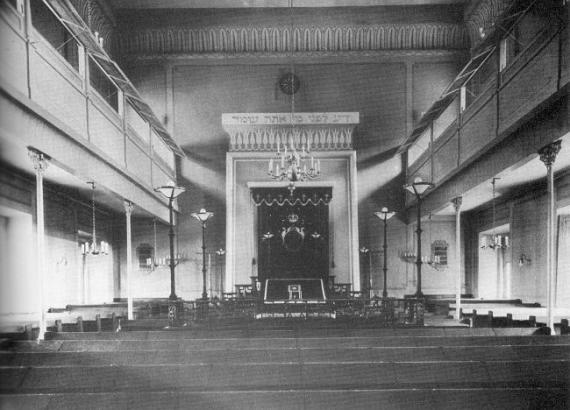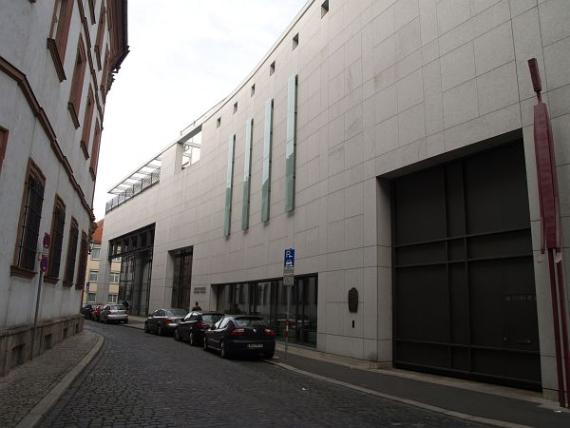Domerschulstraße 21
97070 Würzburg
Germany
After it had been possible for Jewish persons or families to settle in Würzburg again under certain conditions since 1803 or after 1808, they soon made efforts to ensure that religious Jewish life was possible again in the city. However, it was to take some time before a community synagogue was established. In 1828 there existed seven private prayer rooms in the houses of rich and respected families such as Hirsch, Jeidels, Mayer and with Chief Rabbi Abraham Bing. On November 29, 1828, the government of Lower Franconia ordered the Jews* living in the city to abandon the private synagogues and to build a common synagogue in connection with the formation of a religious community. In 1831 a hall above the stables of the farmer Joseph Endres at Ursulinergasse 8 was rented ("old synagogue") for the performance of a communal service. In 1834 eleven wealthy Würzburg Jews were able to purchase part of the "Hof zum Fresser" at Domerschulstraße 21 for 9,050 gulden. The buyers left the property to the entire Jewish community of the city for the construction of a synagogue on January 30, 1834. From 1838 to 1841 the synagogue was built according to the plans of the famous architect Friedrich von Gärtner in "Egyptian architectural style" and was ceremoniously inaugurated on September 10, 1841
90 years after the dedication of the synagogue on Domerschulstraße - around 1930 - Würzburg was considered the city of the "seven synagogues". These were the following prayer houses and prayer rooms:
The main synagogue in the Domerschultstraße
.
The small synagogue on the first floor of the community center
in the house of the Bamberger family in Bibrastraße 17 there was a private synagogue
.
The prayer room in the Jewish old people's home at Dürerstraße 20
The synagogue in Heidingsfeld
The synagogue from Kirchheim near Würzburg
During the November pogrom in 1938, the main synagogue in Domerschulstraße was attacked by SS and SA men. Windows and interior furnishings were smashed, and candlesticks and ritual objects were destroyed. The Torah scrolls were set on fire, but the house was not burned down - presumably with consideration for the "Aryan" houses in the vicinity. Among those who were present in the synagogue was university rector Prof. Dr. Ernst Seifert, then SA leader and SA Obersturmbannarzt. After the pogrom, a party office of the NSDAP was established in the synagogue building.
During the bombing of Würzburg in March 1945, the former buildings of the Jewish community, including the synagogue building and the former community center, were completely destroyed. In 1956, the site was leveled to create a seminary sports field. A memorial plaque was placed on the wall surrounding the sports field (the sports field was not open to the public) in 1964.
In 1998, after protracted negotiations, the property of the former Jewish institutions on Domerschulstraße came back into the possession of the Jewish Community of Würzburg and Lower Franconia. The aim was that in the longer term, a synagogue of Würzburg could again be built on this site.

aus: Roland Flade: Die Würzburger Juden. Ihre Geschichte vom Mittelalter bis zur Gegenwart. Würzburg 1987. Erweiterte Auflage (mit einem Beitrag von Ursula Gehring-Münzel) 1996

